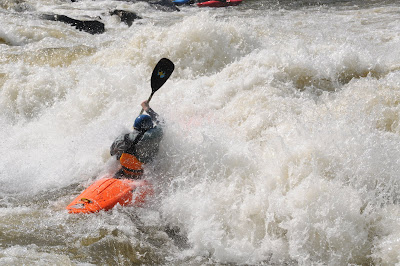
Daylight savings time is over and the drought continues in the Southeast. These two things along with the rough and tumble economy could bring one down, but don't give up too quickly we have the perfect cure. You need to take a paddling trip, and it just so happens we have the perfect place, the Dominican Republic.

We are looking forward to our second season in the Dominican Republic after two Pilot trips last year. We ran our first ever commercial trip in January 2008, followed up by an advanced Teen group in June. In September we returned once more to teach a swift water rescue, and first-aid course to our Dominican counterpart Rancho Baiguate. Needless to say we spent quite a bit of time there this past year and are looking forward to our 2009 season with some new runs to add to our itinerary.

So why should you come to the Dominican Republic with us this winter? Because you can't afford not to that's why. Plane tickets to the DR are under five hundred dollars from the southeastern US and depending on how far south you are they could be really cheap. The Ranch where we stay is only 45 minutes from the Santiago International Airport (STI) and is on the banks of the Jimenoa river. Just think you can leave home in the morning take a short flight, go paddling in the Dominican Republic and take out at the door of your room all in one day.


Not only are we offering kayaking trips but we can accommodate non paddling friends and family as well, with a rafting or multi-sport adventure. Rancho Baiguate offers everything from horseback riding to multi-day trekking trips and of course the best rafting trips in the Caribbean.
 We are the only outfitter running trips in the DR. Our partner Rancho Baiguate has been rafting in the DR for over ten years. We are still discovering new runs all the time. Paddling is still very new in the DR so there are many logistical challenges; that's where we come in, all you have to do is buy your ticket pack some clothes and let us take care of the rest.
We are the only outfitter running trips in the DR. Our partner Rancho Baiguate has been rafting in the DR for over ten years. We are still discovering new runs all the time. Paddling is still very new in the DR so there are many logistical challenges; that's where we come in, all you have to do is buy your ticket pack some clothes and let us take care of the rest.The trip dates and full pricing details are on the NOC website just click here.


.png)










































